
by Ron Hjertstedt | Sep 29, 2022 | School News, Student Corner

The Indian rupee has been on a downward spiral, and today it hit a record low of 81.26 against the US dollar. The rupee is down nearly 6 per cent since January this year.
Union Finance Minister, Nirmala Sitharaman, recently said that the rupee is relatively better-placed than other global currencies against the greenback.
The value of the Indian rupee to the US Dollar works on a demand and supply basis. If there is a higher demand for the US Dollar, the value of the Indian rupee depreciates, and vice-versa. If a country’s import is more than it’s export then this kind of condition takes place. The rupee’s fall these days is mainly due to high crude oil prices, a strong dollar overseas, and foreign capital outflows. As money flows out of India, the rupee-dollar exchange rate gets impacted, depreciating the rupee.
How does a weak rupee impact you and the economy?
Since India mostly depends on imports (including crude oil, metals, electronics to name a few), the country makes payments in US dollars. Now if the rupee is weak, it has to pay more for the same quantity of items. In such cases, the cost of raw materials and production goes up which gets passed on to the consumers.The falling rupee’s biggest impact is on inflation. The global crude prices have sustained at over $100 a barrel since Russia’s invasion of Ukraine in February this year. High oil prices and a weaker rupee will only add to inflationary pressures in the economy.
Last week, RBI Deputy Governor, Michael D Patra, intervened and said, “We will stand for its stability and we are doing it. We are there in the market and we will not allow disorderly movement of the rupee. We have no level in mind, but we will not allow jerky movement. That is for certain.”
Depreciation in the rupee does not only affect your foreign travel. It can also pinch your pocket with higher fuel prices, higher interest rates on your loans, and so on. If the rupee continues to depreciate, then to cover the economy, the RBI increases its repo rate due to which a common man’s loan interest increases. It also results in increase in petrol prices. For example, if a taxi driver purchases petrol for ₹115 per litre one day, then after the rupee depreciates further,
he might get the same quantity of petrol for ₹120 per litre.
Article written by Shivansh Agrahari on behalf of the SNHS Student Website Team.
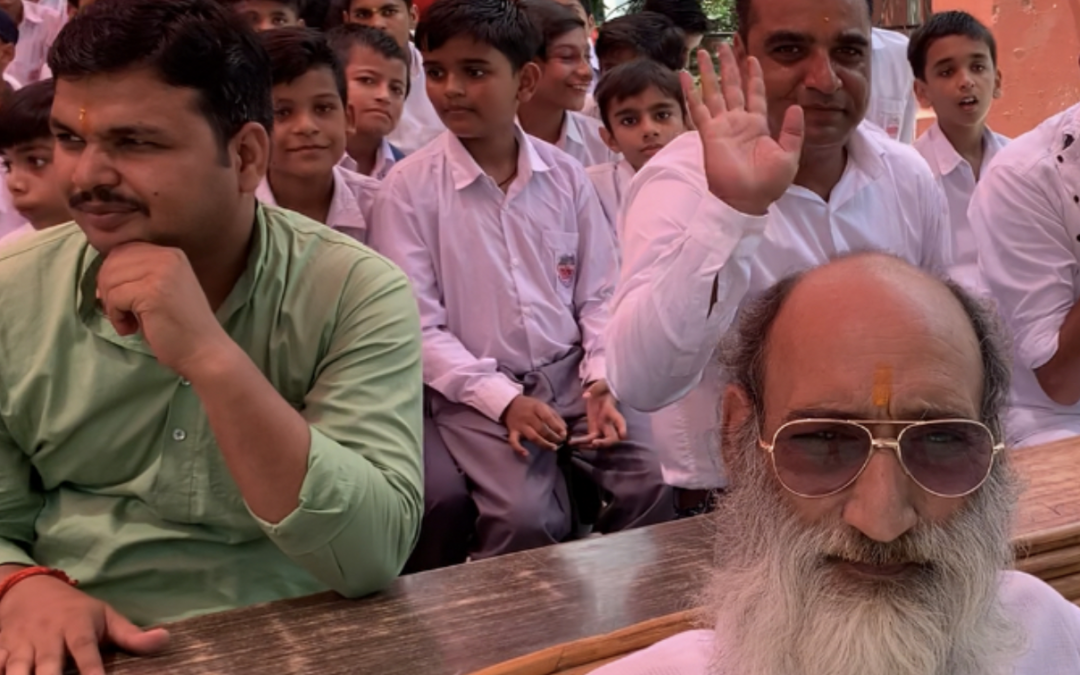
by Ron Hjertstedt | Sep 5, 2022 | News Flash!, Student Corner
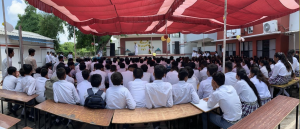 Teachers. They the light of the world.
Teachers. They the light of the world.
A beacon in the dark, and the hope that gives us strength to survive. Teachers add value to our character and make us the ideal citizens to make a better country. Teachers are the building blocks of our lives. They are the ones who motivate the students to do better in every way. Teachers are the builders of a better future.
The bond between a teacher and student is like a potter and the clay. Teachers shape the life of the student by teaching them about brotherhood, kindness, and simplicity. And students are the clay, who eventually become a vessel through the artistic and caring hands of the potter.
In whose memory is Teacher’s Day celebrated, and why? On the auspicious occasion of Dr. Radhakrishnan’s birthday, his students requested him to allow them to celebrate his birthday, but in reply Dr. Radhakrishnan said that “The celebration should not only be for me; I would feel proud if it would be a celebration for all the teachers”.
Teacher’s Day was first celebrated in India on 5 September, 1962.
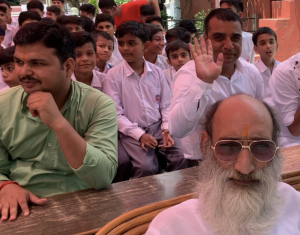
Once, Pt. Jawaharlal Nehru said that he has served his country in many capacities, so he is considered as a great teacher.
How do we celebrate Teacher’s Day at our school? This day is one of the most memorable in the relationship between teacher and student. On this special occasion, we give chocolates, gifts, cards, and especially respect to our teachers. We also organize a party dedicated to teachers. That year’s Class 12 does all the planning. First, they go into every class and introduce their juniors to that year’s planned party, and they ask for funds from each student to help pay for the party.
Traditionally, the students organize games for the teachers to play, and there is dancing, and some great food — all organized by the Class 12 students. It is a party for the students as well as the teachers because of all the memories that are being created and shared from years of interactions. At the end of the party, the students give a “Thank You” speech, showing appreciation to the teachers for putting in years of effort into these balls of clay that will soon go off into the larger world.
Teachers are a precious gift who God has given to students. Their impact on our lives goes beyond cost.
We, the students of our school, want to thank our teachers for always guiding us and showing us the right path for our life. You always try your best, even in difficult
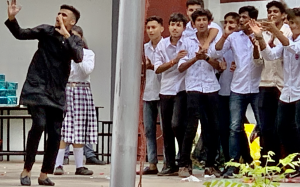
times and situations, and you have high hopes for us. We are blessed to have you in our lives, and we are grateful for you sharing your knowledge and life-wisdom and experience with us. We will forever remember our teachers because of the immensity of their contribution to our life.
In Sanskrit, there is an auspicious mantra dedicated to teachers: “Guru Brahma, Guru Vishnu, Guru Dev Maheshwara; Guru Sakshat, Param Brahma, Jasmai Shri, Gurney Mamah.”
Guru is truly representative of Lord Brahma, Lord Vishnu, and Lord Shiva. Parambrahma means eternal lord whose world is never being destroyed, that lord who had no day or night. He creates, sustains knowledge, and destroys the weeds of ignorance.
The guru (the teacher) guides us and makes efforts to push us to the road of success. We salute all of you great teachers.
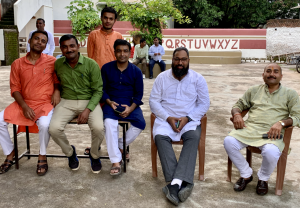
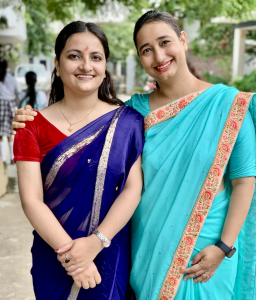

by Ron Hjertstedt | Jun 29, 2022 | Student Corner
The bond shared between parents and children is something which is very typical across cultures and is somewhat indescribable. Irrespective of everything, it is true that no one in this whole world loves and cares about children more than their parents. But, parenting differs from family to family. Indian parents have always believed in being overprotective of their children, which is a good thing most of the time, but this good mentality becomes overdone when parents absolutely control and dominate their children’s life at every stage. The over-possessive, controlling nature of Indian parents affects the children both positively and negatively.
Within the Indian family structure, children are raised with the understand that their parents know what’s best for them, and hence will be the sole authority that decides their future — education and career. The biggest problem with Indian parents is that they are not able to adapt their minds with the dynamically changing world. We are not saying all parents are like that, but especially in rural India, many parents still don’t want to adapt their minds to modern approaches and methods.
Parents believe that “smart” kids should automatically belong to the science and technology field, while “average” kids should go for commerce, and “below-average” kids can go for arts or sports. In this modern world, this way of thinking and planning should no longer be happening. It is called pigeon-holing when kids are predetermined by adults into career paths that they may not want to follow or feel are right for them.
One of the main reasons for this predetermination and pigeon-holing is that parents believe that success is measured by materialistic gains. Money. But, our new generation is more concerned with making a positive difference in the world from our heart, and not judging everything by money, materialism, and power.
India’s parents generally do have an inclination towards encouraging their children obtaining a government job. Parents believe that there is more job-security, higher salary, less job-strain, and more respect in society for government workers as compared to workers in other fields. Moreover, it seems that parents believe that getting a government job is a smoother and easier path than the struggle of entrepreneurialism. In India’s urban centers, this way of parental thinking is changing and adapting to modern needs and discovering what is newly available to younger Indians now than in the past, but in rural sectors, the mentality still has not adapted and grown.
One reason that we believe parents do not support careers in the arts and sports is the uncertainty which the feel is associated with those careers. Middle-class Indian parents think a child should go for graduation and post-graduation instead of going for professional sports, dance, music, or their own start-ups.
Our society has a mind-set that imposes unfair restrictions on girls. Girls still have to face a lot of hurdles whether it is about going to school, going out for studies, or for a career. Even if a female graduates, some parents say, “What is the need of a job for you when we are here to fulfill all your needs”. This negative and restrictive attitude towards girls is mostly seen in rural India, but we if are to move forward as a modern country, we need to eradicate this mentality from our thinking.
Many examples of discrimination exists between males and females, sons and daughters in India. There is undoubtedly a preference for sons over daughters. Some people don’t want to spend a rupee on girls’ education because the parents think that the girls will anyway marry and go away to do household chores in their in-laws’ house. So, as the thinking goes, “What’s the use of spending time and money educating the girl-child?”
Additionally, parents also face peer pressure from friends and family. Parents are afraid of what people might say if they adopt a more modern mentality towards supporting their child’s interests and personal strengths.Parents tend to take a back seat with their girls because of the taunting reactions of society and older cultural thinking.
Yet another reason which we believe negatively affects the mentality of parents in rural India is that they are simply not aware of the current possibilities, accessibility, and support for these new, modern career paths. Moreover, they believe that these modern career paths require a more expensive and risky investment than the straight-forward, age-old career paths and ways of thinking. Parents feel they cannot take the risk of supporting their children’s desire to follow their heart and their own unique abilities, so they play it safe by retreating into old ways of thinking, which, we feel is preventing rural India from advancing towards modernity as it has in other parts of the world or in India’s urban centers.
Indeed, there are cost-effective systems and ways of helping their children follow their unique gifts towards a meaningful career, but it may perhaps take many years for our parents to fully understand these pathways. Perhaps they don’t want to expend the effort or take the time to break out of the old mould. Instead of taking the risk, parents retreat into old thinking and easier pathways because they don’t want to adjust and adapt to the modern world.
In conclusion, parents in rural areas of India must be made aware of the modern education system and how the subject differ from each other. The students must improve their capacity to lean new technologies and become modernized with the current state of what is available to them. But they need the support of their parents to do this.
Students must convince their parents that following their heart and unique abilities is a viable and actual path forward. Living a “successful” life is possible in modern times, but we must not continue to be stuck in the old ways of thinking and planning. Times have changed. We are behind the times. We must adjust and modernize our thinking, open our eyes and minds. India can only modernize and improve to meet the future when our children are freed to become what they were meant to be. Higher education and material possessions are not the only definitions of “success”. Times have changed. The new generation must be allowed to develop in their own way for the good of India.
Thank you for reading our article.
The Satya Niketan Higher Secondary School Website Editorial Team and Student Leadership.
(The views expressed in this article are not necessarily the same as the school management. These are the views of the students, and we support free speech and open opinions for discussion)

by Ron Hjertstedt | Feb 10, 2022 | News Flash!, Student Corner
Shopping has always been an activity in which customers browse the shelves for available goods or services at various physical retail outlets — actual shops. Since the beginning of known history, humans have directly exchanged goods and services with one another in a system of trading (barter — this service or product for that service or product). As civilizations grew, the system of barter was replaced with retail trade involving coinage. Money. That is the system in which we have been familiar for the last few centuries — the system of our parents and grandparents, including most of our lives.
However, customers now can simply access the “marketplace” via the internet by using their computers or smartphones. No need for our physical presence, physical products to be seen and touched, or travel outside the home. This new form of market is the emerging mode of business known as e‑business. It has been active in “developed” countries for decades, but it is now operating in full force in India, and there are definitely serious effects on our way of life and the landscape of physical shops that families have spent decades investing themselves in.
In the present-day context, learning and analyzing consumer behavior is extremely vital for the success of a business. The fundamental issue which arises in front of a consumer when he/she embarks on a shopping endeavor is now, which mode of shopping should they choose to satisfy their own needs. Should they purchase online or offline? Go to a traditional marketplace or a virtual one? Who will they reward with their purchase: The actual shop-owner in their town, or an unseen, virtual one that they don’t know?
The question facing us is whether or not online shopping is better than offline. Who should we reward with our purchase? What kind of ripple effects happen to our physical town and local stores when we make our purchased online from far-off vendors? How are we hurting our local economy, and therefore ourselves?
The online shopping industry has flared up to a point where people prefer to shop online due to ease of purchase, convenience, variety of products, and tech savvy consumers able to effectively surf the net for exactly what they want. People can shop 24/7 from wherever they want, and the world is at their fingertips. There is no hustle and bustle, no rushing, no crowded shops.
But, the fact is that our online habits of purchasing goods is affecting our local business-owners, our towns, our way of living. Or is it?
The traditional way of offline is still considered best by many. People want to physically check the products and have face-to-face communication (bargaining, etc.). It is also relatively easier to return products in person than online. If we have product complications after an online shopping experience, we face more problems when trying to negotiate or return the product. There are also higher chances of shipping issues, packaging problems, mishandling by the delivery company, and risk of fraud if we enter the wrong website marketplace.
The internet was opened to the public in 1991, and soon afterwards online shopping became possible. Since that time, the online shopping experience has become much smoother and enjoyable for the consumer. People have become less skeptical of online shopping over the years.
In conclusion, it is the opinion of our student editorial group that BOTH traditional and online shopping are important to us. Despite the rapid growth of online sales in India, and the projected exponential growth of that industry, the majority of consumers in India still prefer traditional shopping — especially since a huge portion of Indians don’t hav access to online shopping methods, nor the wherewithal to understand how to navigate the internet shopping experience. People want to see the shop-owner and touch and try on the product in real time.
Both online and offline experiences have their good and bad points, problems and benefits. There is a trust issue for us when dealing with money online. However, the allure of a better product assortment and easy shopping experience is a benefit for the online proponents. There are serious responsibilities we have of taking care of our towns and local shopping centers by continuing to shop offline so that we reward our local vendors and their families — making our towns strong. Also, questions of what is better for the environment — offline or online?
In any event, how we spend our money is extremely important. Every rupee we spend is a reward to someone for something. We need to take many issues into account when we buy something either online or offline. Time marches on, and we have to adjust to modernity and yet remain true to our values.
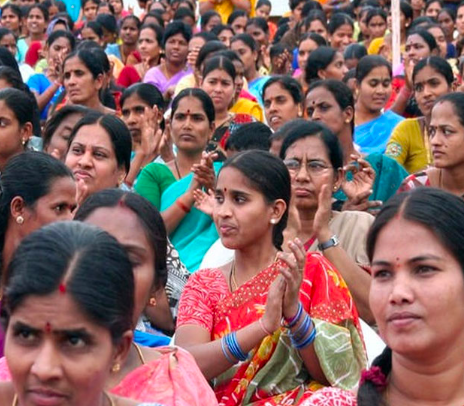
by Ron Hjertstedt | Jan 13, 2022 | News Flash!, Student Corner
Finally, More Females than Males in India
A recent census shows that there are remarkably more females than males in India for the first time in over one thousand years!
One of the most important structural aspects of a society is the relative number of males and females who compose it. According to the Fisher’s Principle, gender ratio is defined as the proportion of females relative to one thousand males in a population. In India, we are now seeing, for the first time since the onset of modern record-keeping, the gender ratio as tipped in favor of females. Now, for the first time since the Vedic Period, over 1,000 years ago, for every 1,000 males, there are 1,020 females according to the National Family Health Survey‑5.
During the Vedic Period in India (1,500 BCE — 50 BCE), women enjoyed absolute economic and societal status, and equality and freedom (although it wasn’t perfect as a boy-child was still preferred over a girl-child). The Vedic Period is known as the “Golden Age” for women in India. That era was characterized by the absence of the purdah system (the practice of keeping men and women separate), no discrimination for educational opportunities between the genders, equal rights in selection of partners, polygamy being rare, and widows being able to marry again.
In the post-Vedic period, the status of women fell: women suffered many setbacks when various restrictions were put on women’s rights and privileges. It became increasingly untenable to birth a girl-child instead of a boy-child. Education, which had been an accepted norm for women, was neglected, and later on, girls were totally denied access to education. The Medieval Period was the darkest era in the history of India for women. The status of women in society further deteriorated when child marriage, a ban on re-marriage for widows, the purdah system, polygamy, Jauhar, and sati Pratha (throwing women onto her her husband’s funeral pyre) became a regular part of cultural life.
A gender ratio which is not in favor of women is a dangerous sign for any society because it indicates a high female fetal mortality rate, selective abortions, and excess female deaths. India is a patriarchal society where there is active gender selection by parents, which means that many girls are killed before they are even born. Parents expect sons, not daughters, to provide financial and emotional care, especially in their old age: Sons add to family wealth and property while daughters drain it through dowries; sons continue the family lineage while daughters are married away to another household. People often have a belief that a girl is a liability while a boy is an asset. Misuse of advanced parental diagnostic techniques (sonograms) has led to gender selection with the widespread termination of female fetuses which contributes to a rapidly declining girl-to-boy ratio.
In recent years, India has enacted several government initiatives (see addendum below) to address these important issues in order to begin the process of creating a more optimistic future for females in India from birth throughout all of life by protecting them more holistically and fully.
The status of women improved during the wave of feminism in India in the last few decades. The Feminist Movement (also known as the Women’s Liberation Movement) refers to a series of political campaigns that aim to define and establish the political, economic, personal, and social equality between the sexes. The focus was on institutional reforms which resulted in reduced gender discrimination, giving women access to male-dominated spaces, and promoting equality. However, despite all of that, evils such as domestic violence, female infanticide, sexual abuse, and abortions for gender selection still exist in our society and must be addressed openly with meaningful reforms taking place.
Despite the continued issues of gender inequality, good news is indeed good news, and we should discuss it and celebrate it. The ratio of females to males in India has indeed equalized for the first time in over a thousand years. Our country is finally beginning to appreciate the deep value that females bring to the table to make India a world leader. The importance of protecting the equal rights, safety, and health and welfare for females of all ages is a foundational aspect upon which we can build a modern culture and be a world leader.
This turn of events is largely due to the increasing life-expectancy of females as well as the changes that have been made in the public consciousness as well as the various government initiatives. Although safe spaces for open conversations are happening on an increasing basis, we still need to make constant assurances that we will acknowledge the dignity of women. Laws that protect women are on the books, but they need to be enforced, and perhaps we need even more laws to ensure that the life of all females is protected and safe from inequality, discrimination, child marriage, abortion, violence, rape, beatings, verbal abuse, mutilation, torture, “honor” killings, and trafficking.
Gender equality must be discussed, encouraged openly, and protected in our country in order for us to become the world leader that India is capable of.
Thus, it is imperative to put even more focus on improving the existing policies, laws, and programs to ensure the survival and utter respect for all females in Indian society. We must continue to protect females from harm and disrespect. We must build upon these ideas and not slide backwards once again.
“Yatıra nariyasthu pulyathe remanthe ththra devethha”: The meaning of this Sanskrit sloka is “Where women are respected, there angels will reside”.
* Government Initiatives
- Beti Bachao Beti Padhao (BBBP) aims to generate awareness and ensure protection, survival, and education for the girl-child.
- Working Women Hostel (WWH) promotes the availability of reliable accommodation and ensures the safety and security for women.
- Balika Samridhi Yojana (BSY) focuses on helping girls and motivating them to take up income-generating activities for their own welfare.
- Sukanya Samridhi Yojana focuses on securing a dazzling future for the females.
- Women’s Helpline Scheme focuses on providing 24-hour emergency response to women affected by violence.
Thank you for reading our blog!
The Satya Niketan Higher Secondary School Student Leadership Website Editorial Team

by Ron Hjertstedt | Jan 12, 2022 | News Flash!, Student Corner
Swami Vivekanand: A Hero of Humanity
(by Sanjana Agrawal)
Swami Vivekanand’s birth as Narendranath Dutta was an Indian monk, reformer, philosopher, and one of the most celebrated spiritual leaders of India. He was an inspiring personality and is well known both in India and America since the last decade of the nineteenth century. He is an example of a person who despite having a short life, lived it to the fullest. He taught unconditional love, how to be a better person, and reinforced the importance of giving back to society.
Narendranath Dutt was born into an affluent Bengali family on January 12,1863 in Calcutta (now known as Kolkata), in West Bengal. His parents were Vishwanath Dutt and Bhuvaneshwari Deri. His father was a successful attorney and his mother was a strong, endowed, woman with a God-fearing mind who had a great impact on her son.
He went to Calcutta Metropolitan School for his early education and later enrolled the Presidency College of Calcutta. IN 1880, he joined Keshab-Chandra Sen’s Nava Vidhan and also became a member of Sadharan Brahma Samaj led by Keshab Chandra Sen and Debendranath Tagore. In 1881, he passed the fine arts examinations and completed a Bachelor of Arts degree in 1884. he was a sharp, intellectual student and was interested in music as well as excelling in studies. He also scrutinized Hindu scriptures — the Upnishads on one hand while on the other hand he studied western philosophy and spirituality.
As he grew up, his knowledge led him to questions about the existence of God. Investigating this, he met many monks but none of them could provide answers to his deep questions. As he met Ramakrishna Paramhansa at Dakshineshwar kali temple he asked him the same question: ” Have you seen the God? ” He was given a simple answer, ” Yes,I have seen. I have seen God as clearly as I see you, only in a much deeper sense. ” This inspired Vivekanand to continue meeting him.
In 1884, when his father died, there were many financial crises in his family and that was the turning point in his life as he accepted Ramakrishna Paramhans as his life-mentor. One year later, In 1885, Ramakrishna suffered from throat cancer and was transferred to Calcutta. His disciples took care of him. Ramakrishna gave up his life on 16 August, 1886. After this incident they all started to live together and they performed math, Yoga and meditation. But, after some time he left this and decided to tour around the world to know about several societies and cultures, and also understand and practice what is common in their daily life. Vivekanand carried out his “free-thinking” philosophy into a new paradigm. He went off to Chicago USA to attend the meeting of the World Parliament Organization.
On 11 September 1893, in Chicago, Swami Vivekanand gave an outstanding speech full of wisdom. He started his speech by addressing the audience as “brothers and sisters of America”. in his speech, he described the principles of Vedanta. This led to a huge silence amongst the crowd, and at the end he received a standing ovation.
When he returned to India in 1897, he founded Ramakrishna Mission in Belur Math, Calcutta. The main vision of the mission was to love life, focus on the significance of the individual — his presence and abilities. A school, college, and hospital was established under this. In the mission, his teaching was purposely based on the Vedanta and spiritual teaching of Ramakrishna.
On the evening of 4 July, 1902, he died at the age of 39 while performing mediation at Belur Math, Calcutta. He attained Mahasamadhi, and was cremated on the banks of the river Ganga.
Here are some additional stories and facts about Swami Vivekanand:
- He was a very naughty and angry boy during his childhood. His mother poured cold water on him and said “Om Namah Shivay” to make him calm down.
- When his father died, his family faced financial hardship. He went to Ramakrishnappa to ask for help, but was refused because he was too to pray for himself, not for wealth, but for a deeper conscience and reclusion. That was a turning point for him.
- Once when Swamiji went to America, a woman expressed her desire to marry him because she wanted a son like him. So he answered her by saying that he was a monk which prevented him from marrying, but she can always think of him as her son.
- His birthday, 12 January, is also celebrated on National Youth Day starting in 1984 out of respect and acknowledgement of his philosophy and ideas for which he lived and worked.
This essay was written by Sanjana Agrawal (who also celebrates her birthday today ;^). Thank you Sanjana for sharing your article with us.



 Teachers. They the light of the world.
Teachers. They the light of the world.



